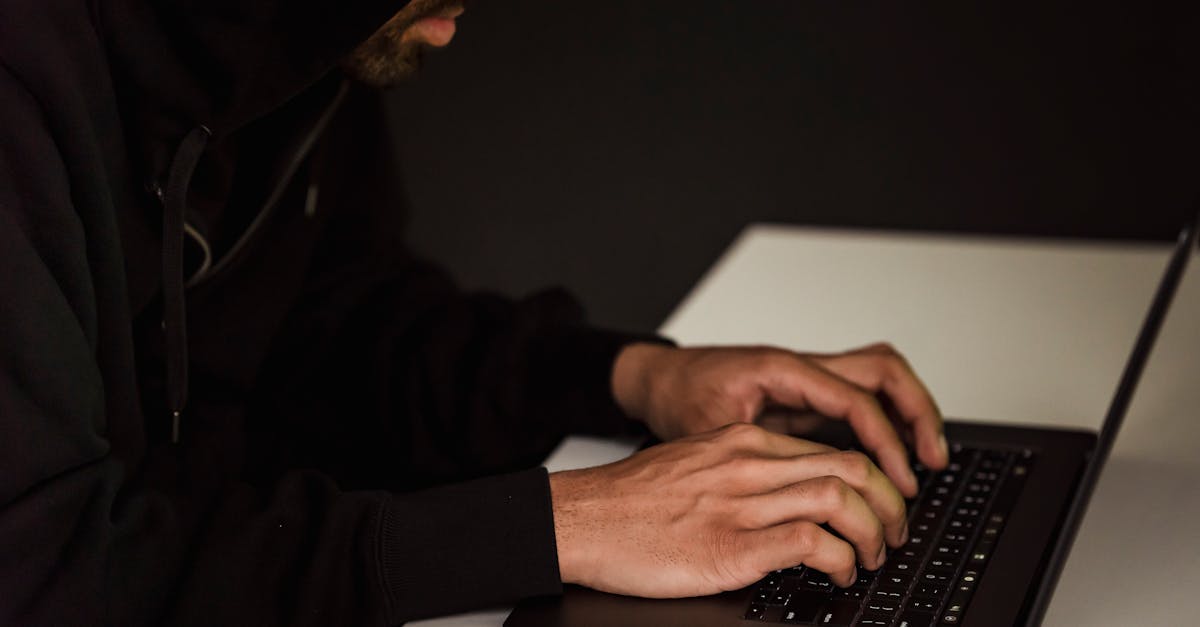How to Spot a Fake Profile on Online Dating Sites
Are you tired of swiping left on profile after profile, only to find that the person you matched with doesn’t seem quite right? You’re not alone. Online dating has become increasingly popular over the years, but unfortunately, it’s also become a place where fake profiles thrive. And while some may think that creating a fake profile is harmless fun, it can actually be a serious problem for those seeking genuine connections.
In this article, we’ll explore the world of online dating and provide tips on how to spot a fake profile. We’ll discuss why people create these profiles in the first place and what red flags you should look out for when browsing potential matches. By the end of this article, you’ll be armed with knowledge that will help you navigate the sometimes tricky waters of online dating with confidence.
 The Art of Online Dating
The Art of Online Dating
Online dating has become a popular trend, and its success rate is on the rise. Finding love online can be an enjoyable and worthwhile experience, but it can also be met with some challenges. It is important to understand how to navigate the world of online dating, as well as how to spot a fake profile among the genuine profiles.
One of the keys to successful online dating is understanding that it’s not all about looks or witty banter. Many people create fake profiles with attractive pictures and witty bios that catch your eye. However, genuine connections are built on shared interests, values, and personality traits. So take time to read through each profile carefully before swiping right.
Another crucial factor in online dating is patience. Remember that finding a perfect match takes time, so don’t get discouraged if you don’t see immediate results. Take breaks when needed and come back refreshed to give each profile your full attention.
Why do people create fake profiles?
The prevalence of fake profiles on online dating sites is a major concern for many users. These profiles are created by scammers, fraudsters, and even bots and can be used to deceive or manipulate other users for various reasons. It is important to understand the motivations behind creating these fake profiles so that you can recognize them and avoid falling victim to their schemes.
Financial Gain
One of the most common reasons why people create fake profiles on online dating sites is for financial gain. Scammers often use these platforms to target vulnerable individuals who may be seeking companionship or romantic relationships. They may pretend to be someone else, gain trust, and then ask for money under false pretenses such as claiming they need help with medical bills or business investments.
In addition, some scammers may try to lure their victims into giving them access to personal information such as credit card details in exchange for supposed romantic opportunities.
To Play Pranks
Another motivation behind creating fake profiles on online dating sites could simply be for entertainment purposes or even malice. Individuals may create a profile out of curiosity or as a joke, but in doing so they could cause emotional harm to other users who become invested in the relationship only later find out it was all fabricated. The impact of such pranks can have long-lasting effects on those affected emotionally.
To Collect Data
Sometimes individuals might create fake accounts solely designed for data collection purposes. Some companies hire individuals called “click farms” that specialize in generating clicks on their websites using automated systems that mimic human behavior; this creates an illusion of increased web traffic which attracts advertisers willing to pay more money per click. One way these businesses generate clicks is by using bots which are programmed specifically designed to interact with online profiles. They collect data as they imitate human behavior such as sending messages or liking posts which can be used to further target users with advertisements.
In conclusion, there are many reasons why people create fake profiles on online dating sites. Understanding these motivations is critical in identifying potential scammers and protecting oneself from falling victim to their traps. Keep these factors in mind when you encounter a profile that seems too good to be true and protect yourself from potential harm.
Red Flags to Look Out for
When it comes to online dating, some people are not always who they appear to be. It is essential to know how to identify fake profiles and avoid getting into potentially dangerous situations. Here are some red flags that you should look out for when browsing through dating sites:
Detailed “About Me” Section
If a person’s “about me” section seems too good to be true, then it probably is. Fake profiles often have an overly elaborate description of the person’s interests, hobbies, and occupation. They might also use buzzwords or phrases that seem out of place or too generic. Pay attention if their story sounds rehearsed.
Another thing to watch out for: the overuse of perfect grammar and spelling, which can indicate that the profile was created by someone with a script or template.
Little-to-No Photos
A genuine person looking for a relationship will likely have several photos on their dating profile. However, fake profiles often only have one or two photos – usually stolen from social media accounts – leaving you with nothing but vague visual representations of who the person really is.
Another red flag here is if the photos seem too perfect or professional-looking – they may be stock images chosen by scammers in an attempt to lure in unsuspecting victims.
The “Too Good To Be True” Bio
If someone’s bio sounds like a fairy tale or reads like an advertisement, then you should proceed with caution. Scammers often use unrealistic language when describing themselves in an attempt to manipulate people into thinking they are more desirable than they truly are: phrases such as “I’m looking for my soulmate,” “never been married before,” “a millionaire,” etc.
Bear in mind that if something sounds too good to be true, it probably is. It’s always better to be safe than sorry, so keep your wits about you and stay on the lookout for any suspicious behavior.
Detailed “about me” section
The “about me” section is where an online dater can describe themselves, what they are looking for, and their interests. This section gives insight into the individual’s personality and can help you decide if they are a good match for you. However, it is also a prime location for fake profiles to add false information. If the “about me” section seems too generic or too perfect, it could be cause for suspicion. Beware of profiles that use vague language or sound like they could apply to anyone. Another warning sign is when the person makes claims that don’t add up with their photos or other parts of their profile. In contrast, an authentic profile has specific details about the person’s personality and interests that make them unique. It should be clear from reading their “about me” section if they share similar values or have common interests with you. Take the time to read through this section carefully and pay attention to any inconsistencies or red flags in what they say about themselves. Fake profiles often use stock photos and steal information from real people to create an alluring profile that’s too good to be true – so approach them with caution!
Little to no photos
One of the red flags that you need to be aware of when it comes to spotting fake profiles on online dating sites is the lack of photos. This may seem like a small issue, but it’s actually a big deal. Think about it this way: when you’re browsing through potential matches, what’s the first thing that catches your eye? It’s usually their profile photo, right? And if someone doesn’t have any photos at all, that’s a major warning sign.
The reason why someone might not have any photos on their profile is because they’re not actually who they say they are. They could be using someone else’s identity, or they may not want to post pictures of themselves because they’re afraid of being recognized by friends or family members. Whatever the reason may be, it’s important to approach anyone with little to no photos with caution.
Of course, there are exceptions to every rule. Some people simply don’t like taking pictures of themselves or don’t want to share them online for personal reasons. But if someone seems reluctant to share any images at all or only has blurry or suspiciously staged shots available, then you should definitely proceed with caution.
The “Too Good to be True” Bio
The bio section of a dating profile can tell you a lot about a person, but it can also be manipulated by scammers and catfishers. A common tactic is to create a bio that is too good to be true, filled with overly flattering descriptions of themselves and their accomplishments.
Pay attention to the language they use in their bio. Are they claiming to have achieved incredible things at a very young age? Are they describing themselves as the most attractive person you’ll ever meet? These are red flags that should not be ignored.
Remember, there is nothing wrong with being confident, but if someone’s bio seems too perfect or unrealistic, it’s likely that they’re not telling the truth. Keep in mind that online daters are real people with flaws and imperfections, just like you!
Another indication of a fake profile is when the user keeps changing their personal information every now and then. For instance, one day they identify as an artist while on another day they claim to be an entrepreneur running multiple businesses. Always keep an eye out for such inconsistencies.
The lack of responses
One of the biggest red flags when it comes to detecting a fake profile on an online dating site is the lack of response to your messages. This could be for a variety of reasons, but if you’re consistently reaching out and not receiving any replies, it may be time to consider that the profile you’re messaging may be fake.
Some scammers create fake profiles solely for the purpose of luring in unsuspecting victims. They may not actually be interested in pursuing a real relationship or engaging in conversation beyond trying to get personal information out of you. Others may have already moved on from their fake profile, leaving messages unanswered.
If you’re experiencing a lack of responses, it’s important to take note and potentially move on from that profile. Don’t waste your time and energy on someone who isn’t genuine or interested in getting to know you.
 Their messaging style
Their messaging style
One of the most obvious signs that you’re dealing with a fake profile on an online dating site is their messaging style. More often than not, these scammers tend to use generic messages that they can easily copy and paste into any conversation. This makes sense since they’re probably targeting multiple people at once, so it’s easier to stick to a script rather than personalize each message.
Another thing to look out for in their messaging style is their grammar and spelling. While everyone makes mistakes from time to time, consistent errors in spelling and grammar could be a sign that the person behind the profile isn’t who they claim to be. Scammers may not have access to proper language tools or may be using translation software which can result in awkward phrasing and nonsensical sentences.
Finally, pay attention to how quickly they want you to move off the dating site platform and onto personal messaging or email. This is because most dating sites have safety features like blocking or reporting a user, but once communication moves offsite, it becomes harder for the platform moderators to help prevent fraudsters from taking advantage of users away from their watchful eyes.
Reverse image search is your friend
In this digital age, scammers have become more advanced in creating fake profiles that can fool anyone. They often use stolen photos from unsuspecting individuals to make their profiles appear more authentic. However, with the help of reverse image search tools, you can easily determine whether a profile picture is legitimate or not.
One such tool is Google Image Search which allows you to upload an image or paste an image URL to search for where else on the web the same image has been used. If the photo appears on multiple websites under different names and profiles, then it’s a clear indication that it’s a fake photo and doesn’t belong to the profile owner.
Another great tool is TinEye which also offers reverse image search functionality. Similar to Google Image Search, TinEye provides information on where else an uploaded or pasted URL photo has appeared online. This makes it easier for you to spot fake profiles and avoid becoming a victim of online fraud.
Safety Tips
 Meeting in Person
Meeting in Person
Before meeting anyone you’ve connected with online in person, take the time to get to know them better. Start with some basic questions and gradually work your way up to more personal topics. Make sure you feel comfortable with the person and trust that they are who they say they are. When it’s time to meet in person, always choose a public location and tell a friend or family member where you’re going and who you’ll be with.
Bring your own transportation, don’t give out personal information too soon, and stay sober throughout the date. If at any point during the date you feel uncomfortable or unsafe, trust your instincts and leave immediately.
The Importance of Privacy Settings
Most online dating sites allow users to control their privacy settings, so make sure you take advantage of this feature. You should always keep your profile private until you’re ready to share it with someone else. Additionally, be wary of sharing too much personal information on your profile or through messaging.
Avoid using real names or giving out phone numbers or home addresses until after you’ve gotten to know someone well enough to trust them. Finally, be mindful of what photos you share on your profile as well as on social media platforms linked to your dating account.
List of Emergency Contacts
In case something goes wrong while using an online dating app or website, prepare a list of emergency contacts that can help in case of an emergency such as friends’ phone numbers and addresses.
You may also consider carrying pepper spray for self-defense purposes while meeting strangers for dates from dating apps or websites.
By following these safety tips when using online dating sites, you can make sure that your journey is enjoyable without putting yourself at risk. Remember to trust your instincts and don’t be afraid to take a little extra time getting to know someone before meeting them in person.
Conclusion
In conclusion, while the existence of fake profiles on online dating sites can be concerning, it is important to remember that there are steps you can take to protect yourself. By carefully reviewing a profile’s about section and photos, paying attention to how they message you, and utilizing tools like reverse image search, you can better ensure that you’re communicating with someone who is genuine. With these safety measures in mind, online dating can remain a fun and rewarding way to meet new people.

 The Art of Online Dating
The Art of Online Dating
 Their messaging style
Their messaging style Meeting in Person
Meeting in Person


